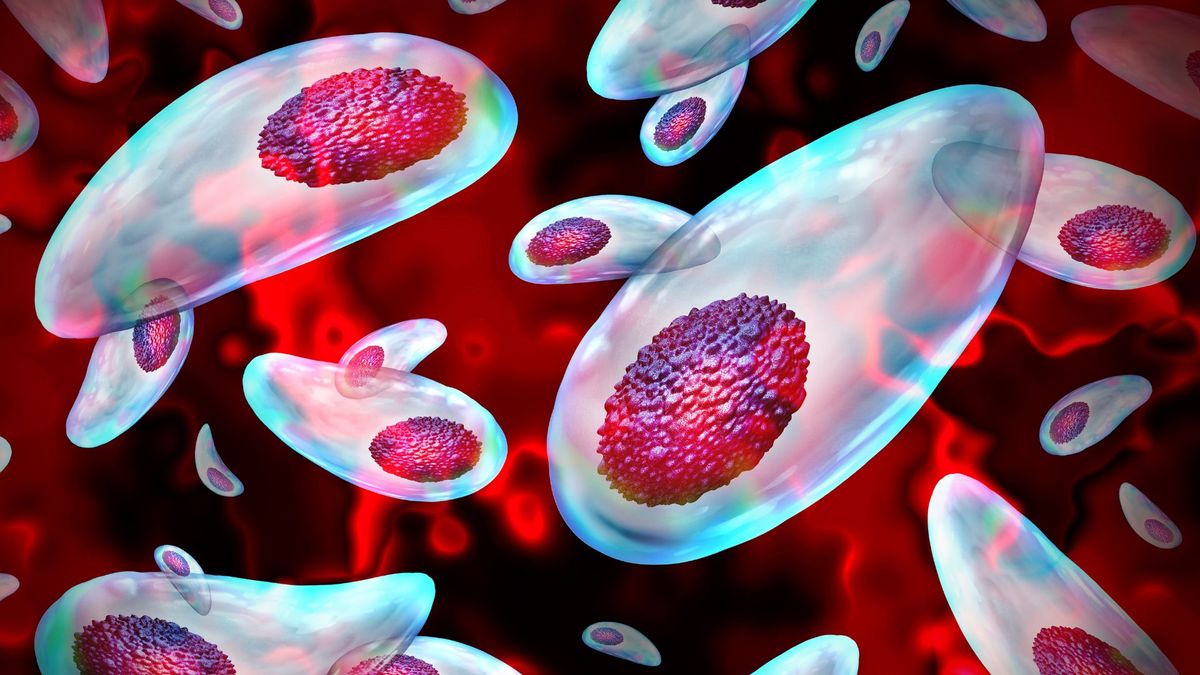A parasite called Toxoplasma gondii lurks inside 1 in 3 people worldwide, hiding out in the brain and other organs. Now, scientists have hijacked this microorganism to shuttle drugs into the brain — although they’ve yet to test the invention in humans.
Many drugs are difficult to deliver into the brain because the delicate organ is protected by a tight membrane known as the blood-brain barrier, which allows only select substances to pass out of the bloodstream and into its tissues. The barrier is especially impervious to large, water-attracting molecules, including many proteins.
Conversely, the single-celled organism T. gondii easily bypasses the brain’s security — famously, when inside the brains of mice, the parasite causes rodents to forget their fear of cats. People typically pick up the parasite by swallowing it, and then it migrates to the brain on its own accord or with the co-opted help of immune cells. Most people develop no overt symptoms as a result of this, but a minority can develop disease.
In a new study, published Monday (July 29) in the journal Nature Microbiology, researchers engineered the parasite so it could carry cargo — including large proteins and packages of multiple proteins — to brain cells and then release their loads into the cells. The team demonstrated this approach in test tubes, lab mice and tiny models of the human brain known as brain organoids.
Related: 10 surprising facts about the ‘mind-control’ parasite Toxoplasma gondii
“This has potential implications for treatments that need to cross the blood-brain barrier,” the editorial team of Nature Microbiology wrote in a research briefing about the study. Many of the study authors are now either scientific advisers to or employees of a company called Epeius Pharma, which is developing this technology for future use in human patients.
The research team got the idea to use Toxoplasma as a drug-delivery system back in 2013.
“It seemed almost too ‘far out there’ at the time — this parasite seems to do everything we would need to solve the problem of brain delivery,” lead author Shahar Bracha, a postdoctoral associate at MIT’s McGovern Institute for Brain Research, wrote in the research briefing.
Transforming the parasite into this system took years of work, during which Bracha was earning her doctorate from Tel Aviv University and collaborating closely with Lilach Sheiner, a professor of parasitology at the University of Glasgow.
“The more we explored this idea, the more feasible it seemed,” Bracha said.
The experiments leveraged two structures in the parasite: the rhoptry, which injects proteins into cells from the outside, and dense granules, which secretes proteins from inside a cell.
The injection mechanism used by rhoptries — known as the kiss-and-spit — was able to deliver small amounts of proteins into targeted cells, while the dense granules delivered larger amounts of protein more successfully. The researchers suggested that, once refined, these two delivery systems might be best suited for different purposes.
When the researchers injected their engineered parasites into mice, the rodents didn’t get sick. However, T. gondii isn’t always harmless. In humans, especially those with weakened immune systems, the parasite can sometimes replicate out of control, damaging the brain, heart and eyes. It also poses a risk to growing fetuses and can lead to severe consequences, like blindness or brain damage.
“Unattenuated T. gondii strains still impose substantial safety risks that must be addressed,” the researchers wrote in the research briefing. Moving this technology forward will require scientists to neuter the parasite, making it as harmless as possible.
Ever wonder why some people build muscle more easily than others or why freckles come out in the sun? Send us your questions about how the human body works to community@livescience.com with the subject line “Health Desk Q,” and you may see your question answered on the website!




















Discussion about this post